Sustainability jobs: 42 million renewable energy jobs by 2050

The International Energy Agency (IEA) estimates significant growth for renewable energy from 2022 to 2027— approximately an 85% increase compared to the previous five years. This massive increase in our energy supply also means new employment opportunities.
Sustainability jobs
Despite numerous challenges of climate change, COVID-19 and the war that led to disruptions in supply chains, sustainability jobs have displayed themselves as a dependable engine for job creation as there is a growing national interest in localizing supply chains and fostering domestic job opportunities.
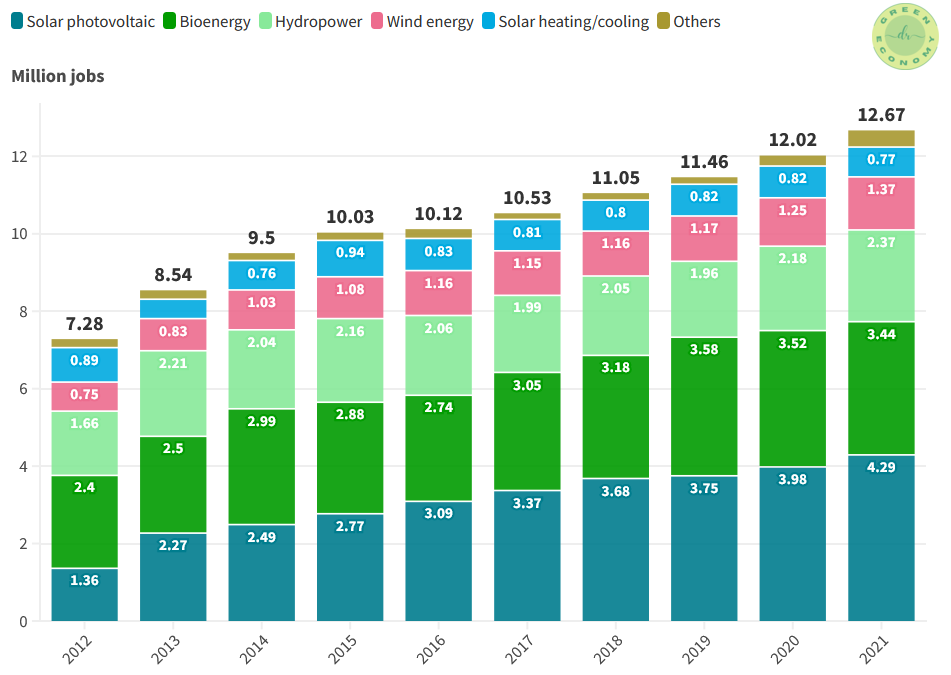
Figure 1 exhibits the evolution of global renewable energy employment by technology from 2012-2021, clearly showing a surge. In 2021, global employment in the renewable energy sector reached a total of 12.7 million, nearly doubling the figure recorded in 2012.
As of writing this article, the last available public data on global renewable employment dissected into different sectors, is from 2021, shown in Figure 2. Among all, solar energy emerged as the fastest-growing, providing 4.3 million jobs in 2021.
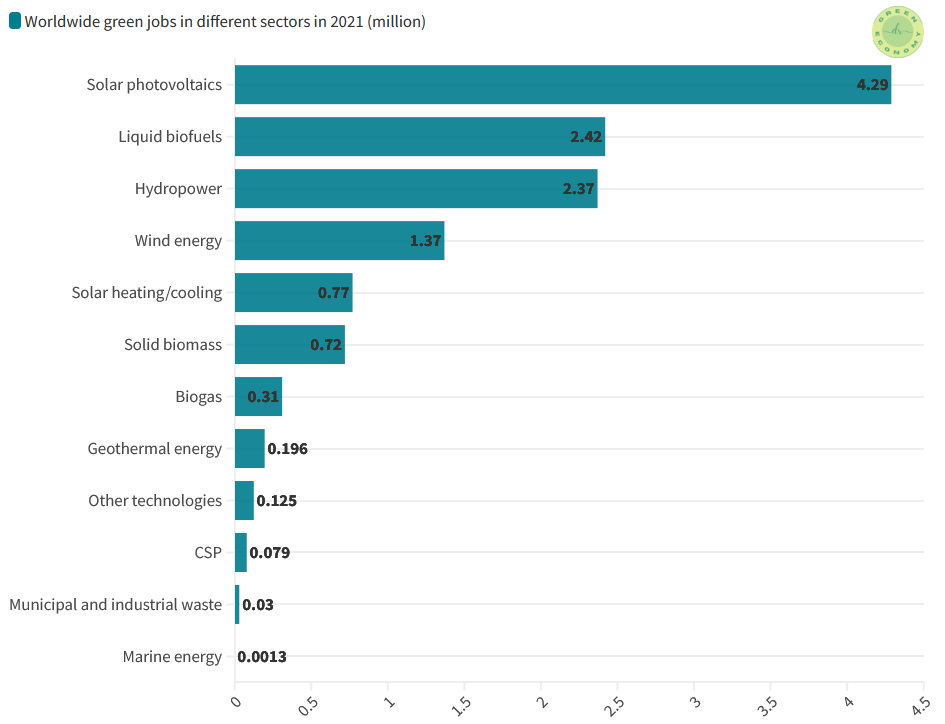
Southeast Asian countries, for instance, have emerged as major manufacturing hubs for solar photovoltaic (PV) panels and biofuel producers, contributing to the growth of these sectors.
China holds the position of being the foremost global manufacturer and installer of solar PV panels, and concurrently, it has played a significant role in fostering an increasing number of job opportunities within the offshore wind sector.
Brazil continues to lead in biofuel employment but is also experiencing a rise in jobs related to wind and solar PV installations. In India, solar power installed capacity has reached around 61.97 GW in 2022, generating numerous installation-related jobs.
The wind energy industry came behind liquid biofuels and hydropower but saw an increase in job opportunities during the same year, with countries actively establishing the necessary industrial base and infrastructure to support offshore installations.
Europe will witness the installation of approximately 116 GW of new wind farms during the period spanning from 2022 to 2026. The EU-27 is expected to build on average 18 GW of new wind farms in the same period to meet their new 40% renewable energy target.
In the field of hydropower, direct employment in 2021 was dominated by manufacturing roles, comprising about two-thirds of the workforce, followed by construction and installation at 30%, and operation and maintenance at approximately 6%.
The number of renewable energy employees in leading countries in 2021 is shown in Figure 3. Notably, China stands as the largest market for renewable energy jobs, employing 5.4 million.
Brazil follows with 1.3% of its workforce (1.27 million) engaged in renewable energy, particularly excelling in the biofuels domain. Other prominent markets include the EU (1.24 million), the US (0.92 million), India (0.86 million), and Germany (0.35 million).
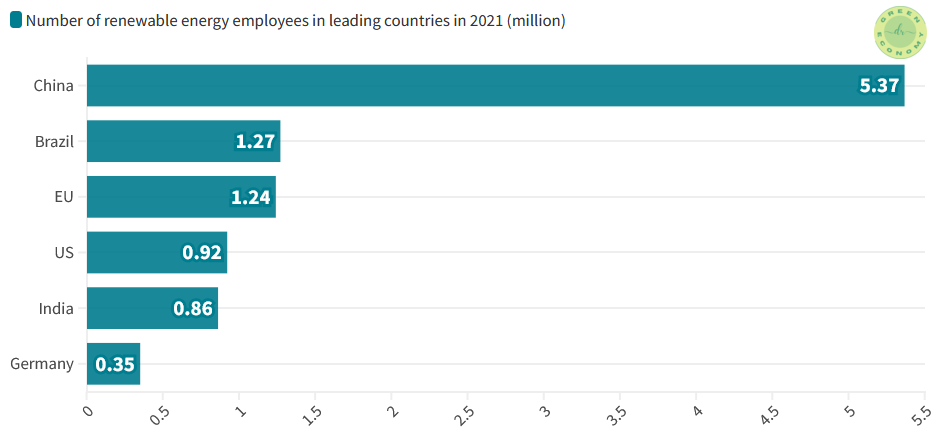
According to the recently published IEA's first-ever World Energy Employment report, the energy sector employed over 65 million individuals in 2019, constituting approximately 2% of the global workforce.
Job distribution was fairly even across various sectors, including fuel supply, the power industry, and areas related to energy efficiency and vehicle manufacturing.
While the onset of the COVID-19 pandemic initially led to a decline in some energy-related employment, it has since bounced back to pre-pandemic levels. The IEA highlights that many employees in the fossil fuel industry possess valuable expertise that can be applied to other sectors.
For instance, individuals skilled in petroleum and oil engineering can leverage their knowledge for geothermal energy production, while chemical engineers working in refineries can utilize their expertise in the creation of environmentally-friendly fuels and hydrogen.
Read: Chief Sustainability Officers: women are more favorable for the role
Why sustainability jobs are booming?
Countries have announced their legislative developments in favour of renewable energy, which demonstrates growing employment opportunities in the given sector.
For example, the US has an Inflation Reduction Act— projected to drive renewable energy employment at a pace surpassing the overall job growth in the country.
In the US, the implementation of federal incentives is anticipated to encourage residential solar installation companies alone to hire an estimated 340,400 additional workers within the next five years.
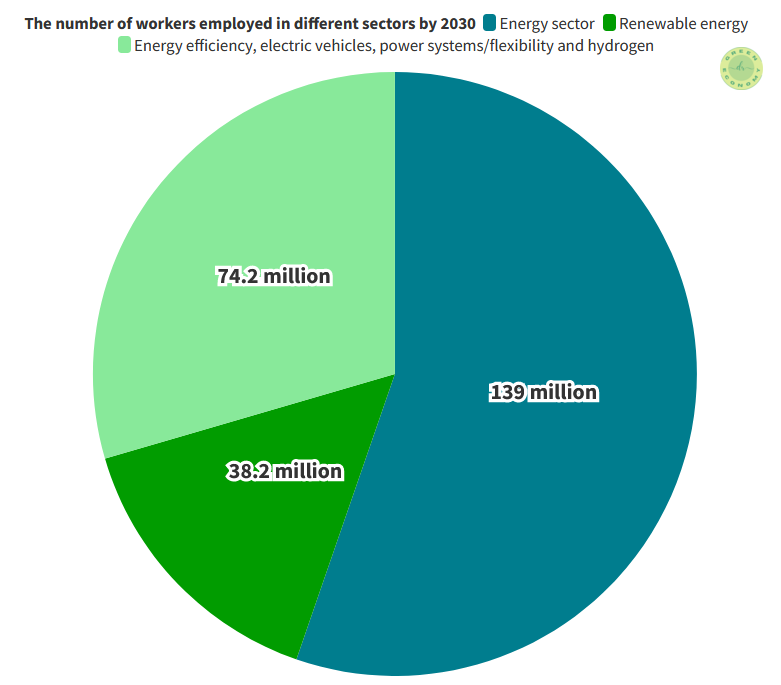
Looking ahead to 2030 in Figure 4 and taking into account a bold energy transition scenario that involves significant initial investments, the global workforce in the energy sector is estimated to surge to 139 million jobs.
This comprehensive number includes a staggering 74 million jobs in energy efficiency, electric vehicles, power systems, and hydrogen, along with an additional 38.2 million jobs specifically in the renewable energy sector.
The UN states that every dollar of investment in renewables creates three times more jobs than in the fossil fuel industry. The IEA estimates that while about 5 million jobs could be lost by 2030 in fossil fuel production, this could boost an estimated 14 million new jobs in clean energy.
Looking further to 2050 in Figure 5, the 1.5°C scenario foresees a substantially greater number of job opportunities in renewable energy— a total of about 42 million. The transition towards cleaner energy sources holds tremendous potential for job creation and economic growth.
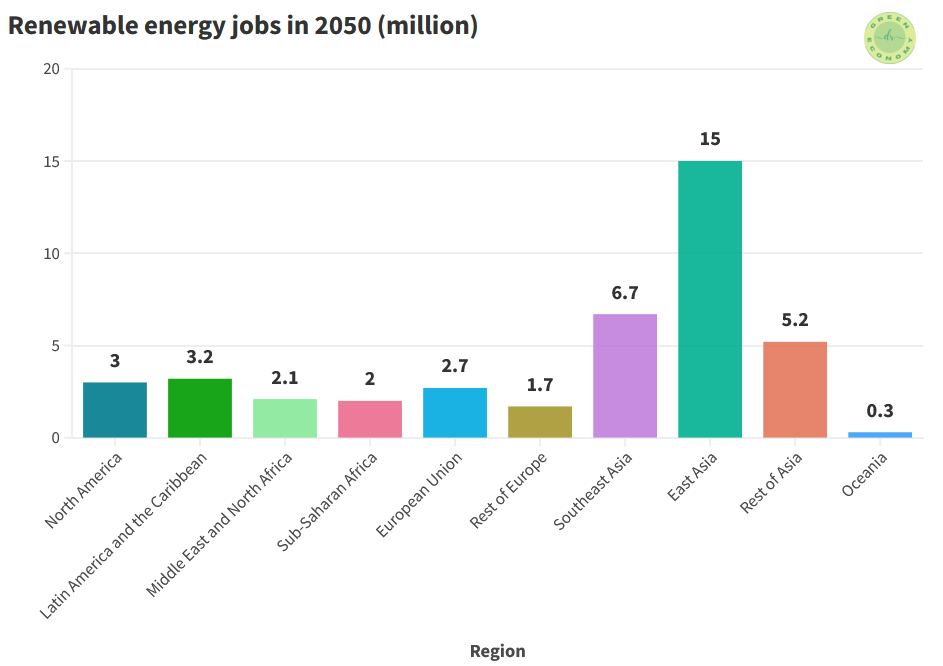
The future of sustainability jobs is impressive but this comes with the importance of combining this growth with employment policies that prioritize the well-being of workers, ensuring a fair and equitable transition.
The transition to a secure and sustainable energy future for all requires unprecedented shifts in the global energy sector with the help of governments, industry stakeholders, labour representatives, and educators to prepare the energy workforce of the future.
Summary
- Global renewable energy employment has nearly doubled from 2012 to 2021, reaching a total of 12.7 million jobs
- Solar energy is the fastest-growing sector, providing 4.3 million jobs in 2021
- China, Brazil and the EU are leading in renewable energy employment
- Energy employment could reach 139 million jobs by 2030, creating more jobs than the fossil fuel industry
- The transition to cleaner energy sources holds significant potential for job creation and economic growth



